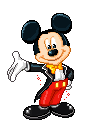|
|

|
 Self Test for Self Test for
Behavior & Belief
|

|
Ψ These questions are part of a larger data base of questions on module 9. The questions are selected to represent the type of question you should expect on unit exam one. You can, in fact, expect to see many of these very same questions on that exam. Exam questions, however, may deal with topics not covered in the self tests or in lectures but are discussed in your textbook. You are responsible for the content of your text book plus the content of lectures, interactive activities, & material on the web site.
Use these sample questions to test yourself & to practice for the test. Click on your choice to see if you are right.
1. Carl Festinger found that feelings of tension arise when one is simultaneously aware of two inconsistent cognitions (e.g., dating someone even though you think that person is mean & ugly). He called this:
2. According to self-perception theory, we learn about ourselves
3. According to cognitive dissonance theory, people seek to avoid
4. Which of the following would be the best example of lowballing?
5. Cognitive dissonance theory is a theory of
6. Which of the following statements about the effects of moral & immoral action is correct?
7. Attitudes are _______ that can influence our reactions.
8. An attitude will be only weakly linked to behavior when
9. Which of the following terms refers to actions expected of those who occupy a particular social position?
|

|
10. Which of the following is an example that illustrates the power of self-persuasion - of attitudes following behavior?
11. Saying is most likely to become believing when
12. If you want people to do a big favor for you, one technique is to get them to do a small favor first; this is known as the
13. Techniques such as low-balling & foot-in-the-door are strategies for
14. Which of the following theories assumes that we observe our actions for clues about our own attitudes & beliefs?
15. Cognitive dissonance theory proposes that we experience _____ when our beliefs are _____.
16. The major difference between Festinger's theory of cognitive dissonance & Bem's self-perception theory is the role of
17. Dissonance theory explains attitude ______, while self-perception theory explains attitude ______.
18. Attitudes influence our actions in which of the following circumstances?
19. You are least likely to feel dissonance when
20. The three dimensions of attitude are
|

|
21. Which of the following is true in reference to the self-perception & cognitive dissonance theories?
22. Which of the following is a stage in the process of
brainwashing?
23. Experiments confirm that _______ behavior toward someone fosters liking for that person.
24. Which of the following supports the presumption that morality can be legislated?
Social Psychology
Robert C. Gates

|
|



































